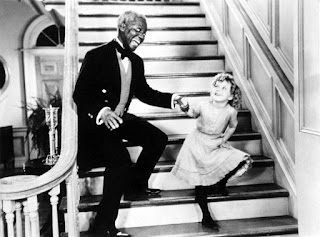The History of Racial Stereotypes
African Americans have been depicted as inferior since the beginnings of the film industry. In earlier films, characters that represented people of color reinforced the prevalent racists attitudes of the day. They were often seen as objects of ridicule not to be taken seriously unless they were sacrificing themselves for their white masters. A film that really exemplifies this way of depicting African Americans is Birth of a Nation (1915) by D.W. Griffith. Birth of a Nation cemented five major stereotypes to the silver screen. The Uncle Tom, Coons, the Mammy, the Tragic Mulatto, and the Black Buck.
The Uncle Tom depicts a black character that is subservient to their white masters. They are overeager to please and gain approval of whites. The Coon stereotype depicts a black character that is clownish, very exaggerated and not portrayed as intelligent. The stereotype is connected to the minstrel, vaudeville shows that were popular at the time. The Mammy stereotype was often attached to black women who worked in white households. Shown as older women and overweight, like the Uncle Tom figure she is amiable, non-threatening, and submissive and is devoted to her white family. The Tragic Mulatto is a mixed race person who struggles to fit in the “white” or “black” world. They are a victim of society, they are an other. The Black Buck stereotype described a caricature of a black man who refused to bend to the law of white authority. They are seen as uppity, irredeemably violent, rude and overly sexual.
 |
| Bill "Bojangles" Robinson and Shirley Temple in the Little Colonel (1935) |
The Uncle Tom depicts a black character that is subservient to their white masters. They are overeager to please and gain approval of whites. The Coon stereotype depicts a black character that is clownish, very exaggerated and not portrayed as intelligent. The stereotype is connected to the minstrel, vaudeville shows that were popular at the time. The Mammy stereotype was often attached to black women who worked in white households. Shown as older women and overweight, like the Uncle Tom figure she is amiable, non-threatening, and submissive and is devoted to her white family. The Tragic Mulatto is a mixed race person who struggles to fit in the “white” or “black” world. They are a victim of society, they are an other. The Black Buck stereotype described a caricature of a black man who refused to bend to the law of white authority. They are seen as uppity, irredeemably violent, rude and overly sexual.
Throughout
film history these stereotypes have morphed to change with the times but they
all go back to the source and racist beliefs. Black women are either subservient
and sexless or they are overtly sexual, only wanting to use their bodies to manipulate
the men around them. For Black men they are either harmless and clownish or
frightening violent beasts who are very sexual, out to rape and pillage.
Comments
Post a Comment